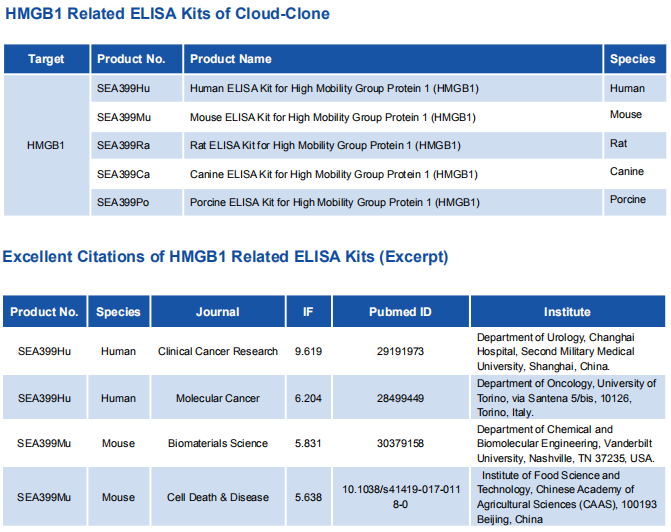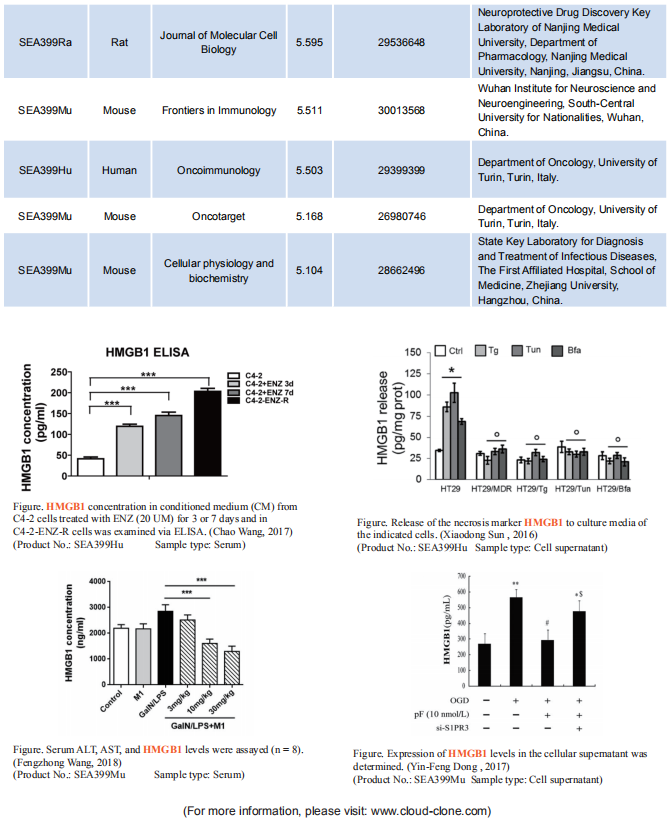Top-Ranked ELISA Kits (High Mobility Group Protein 1 HMGB1). Vol.9 (2019)

High Mobility Group Protein 1 (HMGB1) is a highly conserved nuclear protein widely distributed in mammalian cells. With the discovery of its late pro-inflammatory effect, HMGB1 has become one of the critical medical research spotlights in recent years. HMGB1 consists of three functional regions: two DNA-binding regions (A and B Boxes) and one connected with the negatively charged C-terminus. The HMGB1 B-box is involved in the release of cytokines and is a functional domain that causes inflammatory responses, promots the release of cytokines; the A-box does not induce the cytokine production, whereas the recombinant A-box competes with HMGB1 for binding sites, alleviaties the HMGB1-caused cascade of inflammation. Upon synthesis, HMGB1 is secreted extracellularly and transported to specific effector cells through the body fluid circulation system, and it binds to the
membrane receptor to transmit signals to the cells for exerting its biological effects. At present, a variety of HMGB1 have been discovered, among which Receptor for Advanced Glycationend Products (RAGE) and Toll-like Receptor (TLR) have been the most studied and have attained the greatest degree of attention. When HMGB1 binds to RAGE and TLR, it can activate NFKB, leading to the intra-nuclear transfer of NFKB, thereby inducing transcription and expression of various downstream genes.


